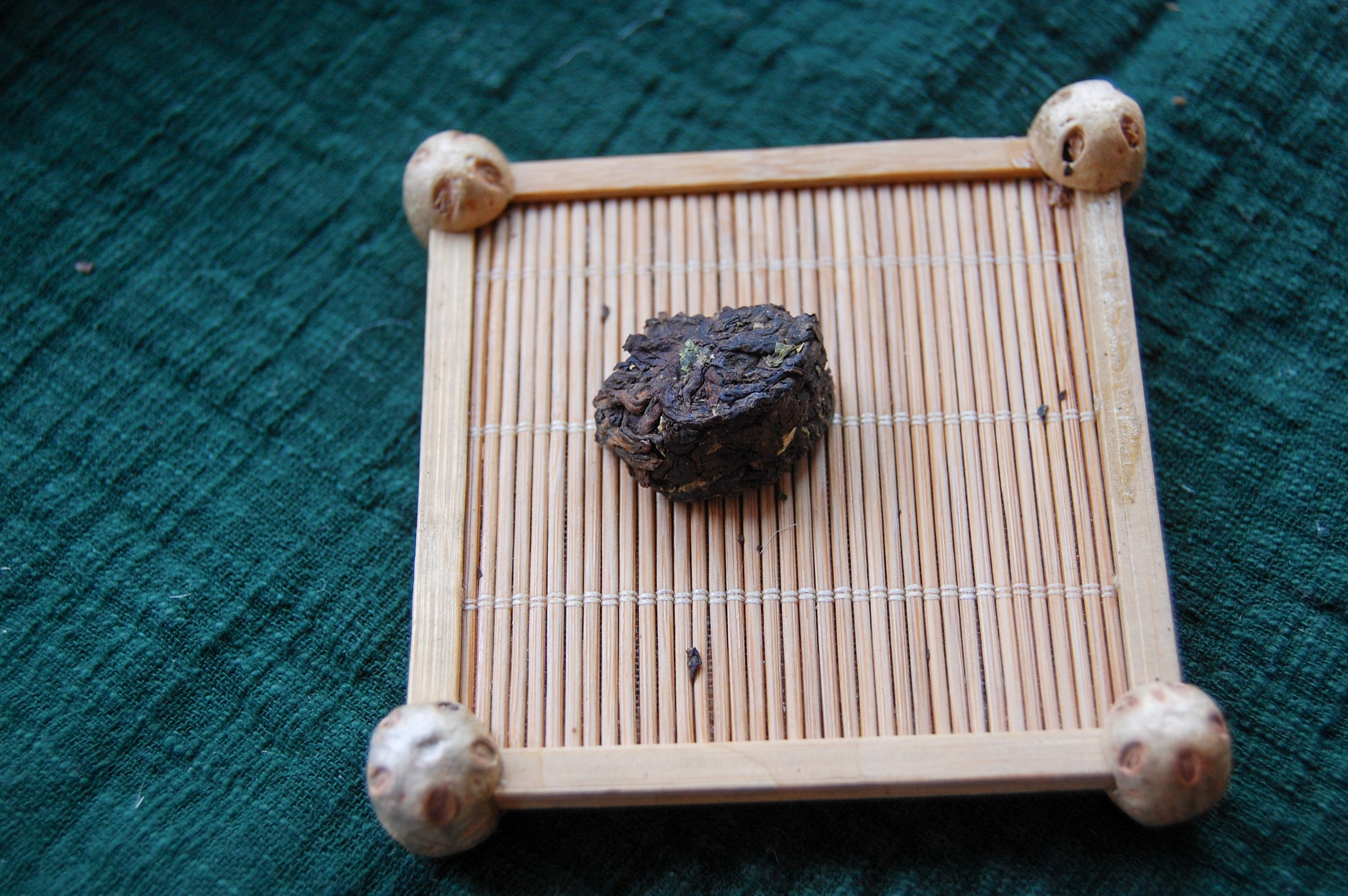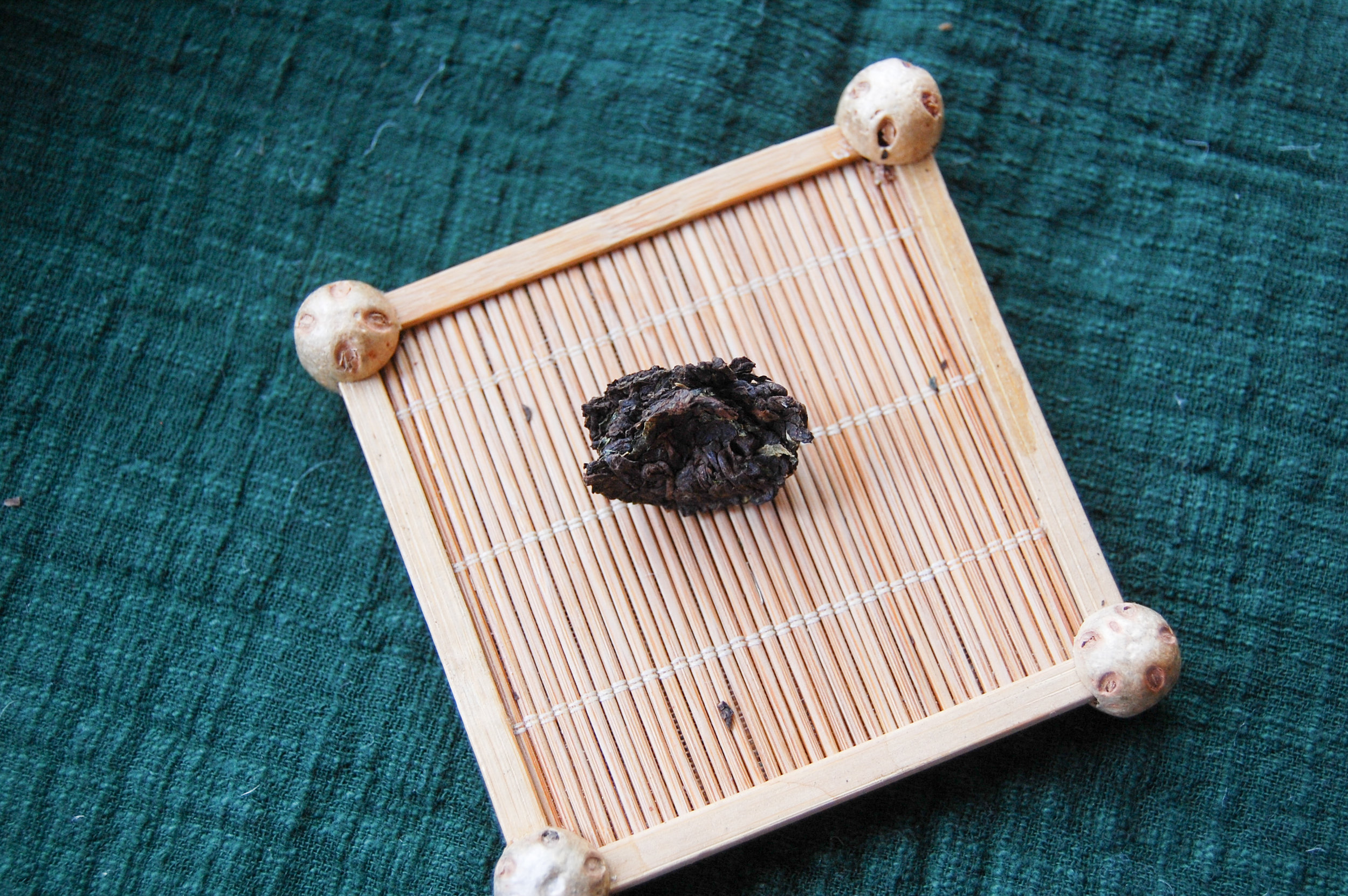Brewing Puerh Tea.
Puerh.
Puerh is another tea that I was so intimidated by. After reading different brewing methods I was extremely overwhelmed and thought that I may have found a tea that was too "complex" to get it right. I was SO wrong!
Puerh comes in many forms but I'll only discuss a few. As you can see in the photo above, the pureh comes in a round candy like shape. Puerh is often condensed into either a cake (larger shape), a brick or a Tuo Cha which is like the shape of the one pictured above.
Puerh is fermented and the one I'm trying for this post is from Zhi Tea. It's called sticky rice puerh. This puerh is from trees in Yunnan, China that are a thousand years old! This particular puerh has another special compenent which is an herb called Nuo Mi Xiang (Rice scent herb). The fragrance, especially to a rice lover like myself, is powerful and makes it more appealing. It kind of reminded me when I tried genmaicha for the first time.
I brewed this puerh in my gaiwan 3 different ways. Because this was my first time brewing this tea, I only used part of it. Lesson learned. I should have used the whole thing since I like dark tea. I also poured the leftovers from each brew into a glass that I would then sample as my 4th tea.
Tea wash: As discussed in my post about using the gaiwan for the first time, you need to "wake up" the tea. Pour the hot water into your pot or gaiwan for a few seconds and pour it out.
1st brew - 10 seconds: Most fragrant. Perhaps because it was the first and "freshest" brew but it certainly smelled the best. The fragrance of the "rice" really traveled up to keep my nose company as I sipped.
2nd brew - 15 seconds: Surprisingly, even though I brewed the leaves longer for this round the result was the sweetest. This also may have to do with me not putting all of the tea to brew.
3rd brew - 30 seconds: After 30 seconds, I could really taste the boldness of the puerh. It wasn't quite bitter yet but it was strong and dark. I will opt for this type of brew in the future. Although it wasn't as fragrant, I loved the taste the best.
Combination brew: I thought it might be interested to try the leftovers of each brew mixed up. In reality, this was just an experiment and the tea for this was diluted and weak. Where as each individual brew discussed above has it's own unique flavor, this one was all over the place.
I'm glad that I have now documented this puerh session because honestly, it's difficult to enjoy the ritual, take pictures and write notes. I filmed my session as well, you can check it out on my instagram!
Puerh is said to have some incredible benefits such as detoxifying and lowering cholesterol. It also has a very unique taste and I'm excited to try different ones. It seems that because this tea is coming from ancient teas, each cake or brick will be different.
My lessons + tips from my first experience:
Do not over brew
If using a larger cake or brick, break off the tea gently
If using a smaller "cake" use the whole thing if you want a bolder flavor
Give yourself time and quiet to enjoy the brewing process
Remember to pour out any extra tea from your pot or gaiwan if doing multiple brews so that the tea in the pot or gaiwan isn't continuously brewing
Don't over complicate and enjoy!








